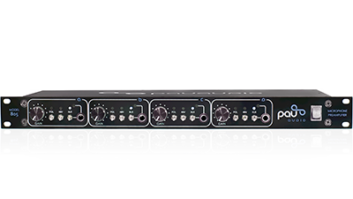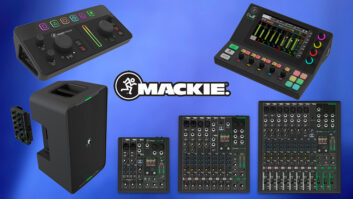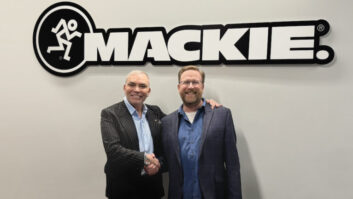It’s no secret that near-field monitoring has its limitations. Creating an accurate listening environment in less-than-ideal surroundings can be a maddening dilemma — proximity and volume can only do so much to overcome bad acoustics. With this in mind, I was eager to put the new THX®-certified Mackie HR624 active monitors and HRS120 subwoofer to the test.
The HR624 is simply a smaller version of the HR824, and both models use the same components and materials. The HR624, however, is geared toward smaller project studios and 5.1 and 7.1 monitoring applications. The 624s utilize a bi-amp design that feeds 40 watts to the 1-inch, aluminum-cooled tweeter and 100 watts to 6.7-inch transducer; the internal crossover point is 3,000 Hz. Back panel controls include sensitivity, an 80Hz highpass crossover, ±2dB high-frequency shelving and a selectable Acoustic Space control for managing bass frequencies in different rooms. The stated frequency response is 50 to 20k Hz, with a maximum output of 112 dB. The 624s, weighing in at 25 pounds each, sport a black, wood-grain finish, and the front panel includes a Mute switch with corresponding LED.
The HRS120 subwoofer, though intended to integrate with the HR624 and HR824, is touted as a perfect companion for any monitoring system that requires a dedicated low-end channel. The HRS120 houses a 12-inch driver driven by an internal 400-watt amp. The back panel controls enable users to tailor the HRS120 for use in various Dolby/THX applications and to adjust crossover points for use with full-range monitors. Connections for both the HR624 and the HRS120 include balanced XLRs and unbalanced RCAs. Multiple HRS120s can also be daisy-chained via the Slave In and Master Out connections. The HRS120 has a flat response between 21 and 150 Hz at up to 100 dB, and is housed in a hefty 94-pound chassis with a removable dust guard.
I tested the HR624/HRS120 setup in my home project studio, an average 12×12×8 bedroom with some minor acoustical treatments. I set the HR624 pair on speaker stands at eye-level, but had to spend some time moving the HRS120 around the room for best results. Ultimately, I positioned the sub to the right of my console, between the desk and one of the HR624s.
Fortunately, on the day I began testing the Mackies, I had already spent several hours inside Morning Wood Studio in San Francisco, listening to some Pelonis Signature Series mains. When I fired up the HR624s, I was immediately impressed with their clarity and accuracy. After a few hours of listening to purpose-built mains within the confines of a professional control room, the HR624s, even in my modest studio, sounded right on the mark. The sound was tight, uncolored and nonfatiguing (which is a miracle in itself for near-fields). They also compare very favorably to standard Yamaha NS-10s, producing an accurate, uncolored sound that is not as taxing on the listener.
Working with some of my own unfinished material, I put up a few problematic mixes that included everything from distorted drum loops and synth bass elements to straight-ahead vocals and guitars. The Mackies were, again, right on the mark, and the mixes I worked on held up in a variety of listening environments. I felt totally at ease using this setup and wouldn’t hesitate using the HR624s in place of my current monitors.
For people working in project studios on either music production or multimedia projects, the HR624s will provide an accurate and uncolored sonic image that will hold up anywhere. For that extra thump, the HRS120 is more sub than most of us will ever need. The HR624 lists for $649/each; the HRS120 lists for $1,499.
Mackie Designs Inc., 16220 Wood-Red Road N.E., Woodinville, WA 98072; 800/258-6883; fax 425/487-4337; www.mackie.com.
Robert Hanson is an assistant editor at Mix. Check outwww.blacksnakemoan.comto see what he’s up to when the sun goes down.




